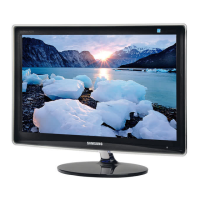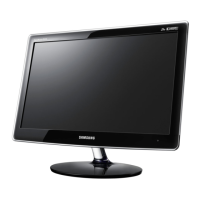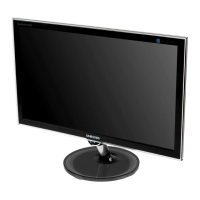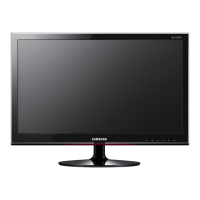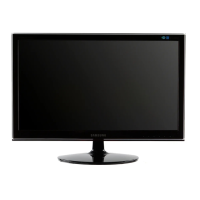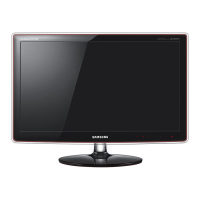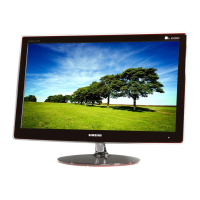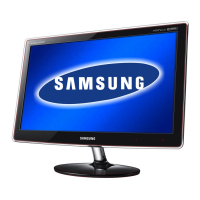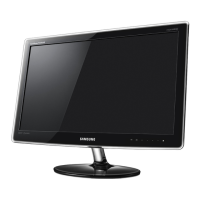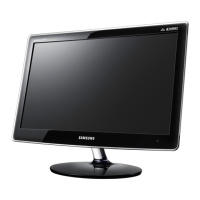
Do you have a question about the Samsung SyncMaster P2370 and is the answer not in the manual?
| Color | black |
|---|---|
| Screen Type | lcd |
| OS Compatibility | windows |
| Screen Size | 23 inches |
| Aspect Ratio | 16:9 |
| Resolution | 1920 x 1080 |
| Refresh Rate | 120hz |
| Response Time | 2 milliseconds |
| Brightness | 250 candela per square meter |
| Contrast Ratio | 1000:1 |
| VGA Ports | 1 |
| DVI | 1 |
| Width with Stand | 22.5 inches |
| Net Weight without Stand | 9 pounds |
Explanation of safety symbols used in the manual.
Guidelines for safe electrical power connection and usage.
Specific safety rules for electrical connections and handling.
Advice on moving and positioning the monitor safely.
Proper procedures for cleaning the monitor and its panel.
Covers miscellaneous safety warnings and considerations.
Recommendations for ergonomic setup and user posture.
Lists items included and unpacking instructions.
Identifies included documentation, cables, and other items.
Lists items sold separately and guide for first-time setup.
Description of monitor buttons and their functions.
Identifies ports on the back of the monitor.
Instructions for using a Kensington security lock.
Details on connecting various cables to the monitor and PC.
Information on adjusting the monitor stand.
Steps for installing the monitor driver automatically.
Alternative method for installing the monitor driver.
Instructions for configuring the monitor on Linux.
Information and installation of Samsung's color management software.
Steps to install and use the MagicTune utility.
Steps to install and use the MultiScreen utility.
Explains AUTO button, screen lock, and unlock features.
Covers custom keys, brightness, source, and OSD overview.
Adjusting brightness and contrast via OSD menu.
Adjusting image clarity and using MagicBright preset modes.
Details on various preset modes and coarse/fine tuning for interference.
Optimizing response time and introducing color adjustment features.
Fine-tuning Red and Green color components.
Adjusting Blue color, overall tone, and screen effect.
Adjusting gamma correction and horizontal screen position.
Adjusting vertical screen position and image aspect ratio.
Configuring OSD menu location and restoring default settings.
Customizing menu appearance, language, and LED indicators.
Adjusting LED brightness and auto power-off functions.
Automatic input selection and OSD display timeout settings.
Reconfiguring shortcut keys and viewing system information.
How to verify functionality and understand warning messages.
How environment affects performance and general usage advice.
Step-by-step guide for common problems like no image.
Resolving problems with OSD display and incorrect screen colors.
Addressing flickering displays, focus problems, and blinking LEDs.
Resolving issues with limited color display or color changes.
How to change display settings and configure energy-saving features.
Guide on cleaning the exterior and common Q&A.
Model name, panel size, and display area specifications.
Horizontal/vertical sync rates and optimal/maximum display resolution.
Operating conditions, system compatibility, and energy-saving features.
Explanation of pixel behavior and Class B EMC compliance.
List of supported display modes and explanation of frequency terms.
Recommended resolution and frequency for best image quality.
General product details and warranty information.
Explanation of image retention phenomenon and prevention methods.
Standards compliance and optimal settings for other models.
Contact details for Samsung customer support globally.
Definitions for Dot Pitch and Vertical Frequency.
Definitions for Horizontal Frequency, Interlacing, Plug & Play, Resolution, and disposal guidelines.
Specific disposal instructions for businesses and legal notice.
